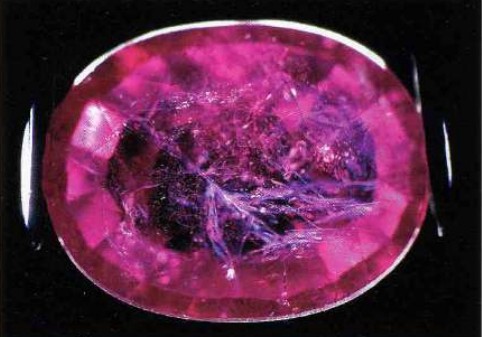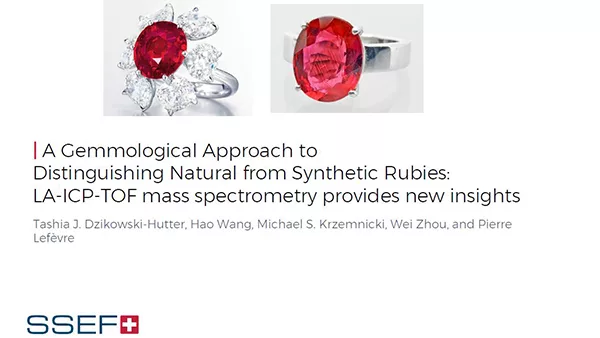
Ruby with xenotime inclusion: age dating provides evidence of east african origin
By Dr. M.S. Krzemnicki, first published in Facette 29 (May 2024)

Rubies from marble deposits are chemically rather similar, regardless of whether they originate from marbles in Myanmar, Vietnam, Tajikistan, or even from Tanzania or other countries in East Africa.
Recently, we analysed a ruby of 15 ct of vivid and saturated colour (Figure 1). Based on the trace element composition a Burmese origin could be rather excluded, as nearly no vanadium traces were present in the stone. Still, the question remained if this ruby was from a source along the Himalayan mountain range or from a marble deposit in East Africa.

We were lucky enough to find a tiny xenotime inclusion at the surface of this ruby, on which we were able to carry out radiometric age dating. Xenotime is an yttrium phosphate (YPO4), with trace amounts of uranium and thorium, and is known as a rare inclusion in corundum (Figure 2). The analyses of the xenotime inclusion within this ruby revealed a radiometric age of 578.9 ± 75 million years. The data plots well on the Concordia curve, but with a rather large range due to the very small size of the inclusion which strongly limited the number of possible measurements (Figure 3).

Based on these age calculations, a formation of this ruby within marbles along the Himalayan mountain range could be definitively excluded, as all ruby deposits located in the Himalaya are geologically much younger (generally only about 15-25 million old). However, the calculated age is in good agreement with the age of ruby formation in metamorphic rocks in East Africa, for example in Tanzania and Kenya (at that time part of the supercontinent Gondwana) and as such this age presents strong supporting evidence of an East African origin for this exceptional ruby of 15 ct.
Interested readers who would like to know more about radiometric age dating and its use in gemstone testing are referred to SSEF Facette 2020, page 10 – 11, in which a general overview about this advanced analytical method is provided.


